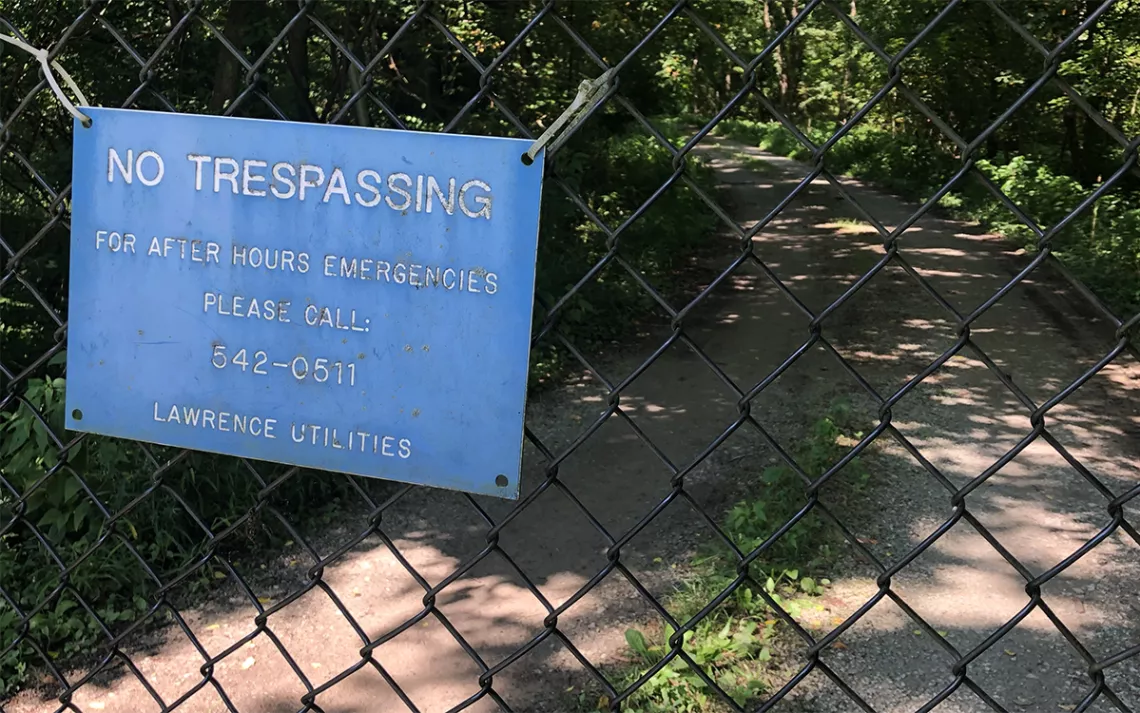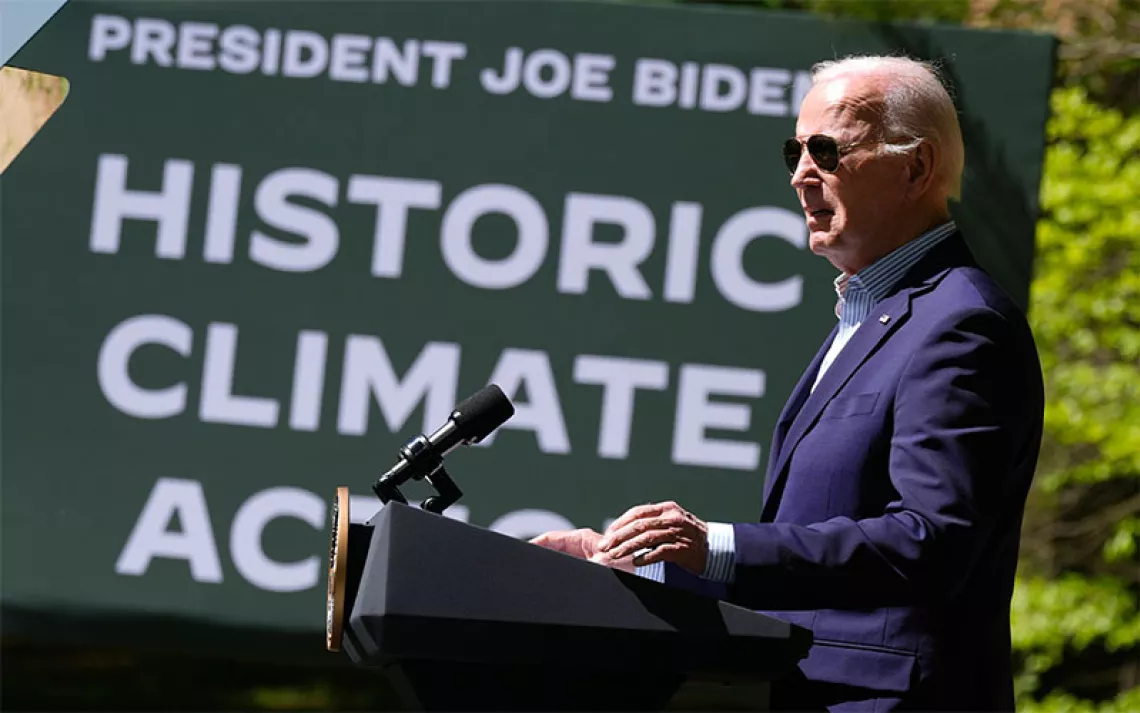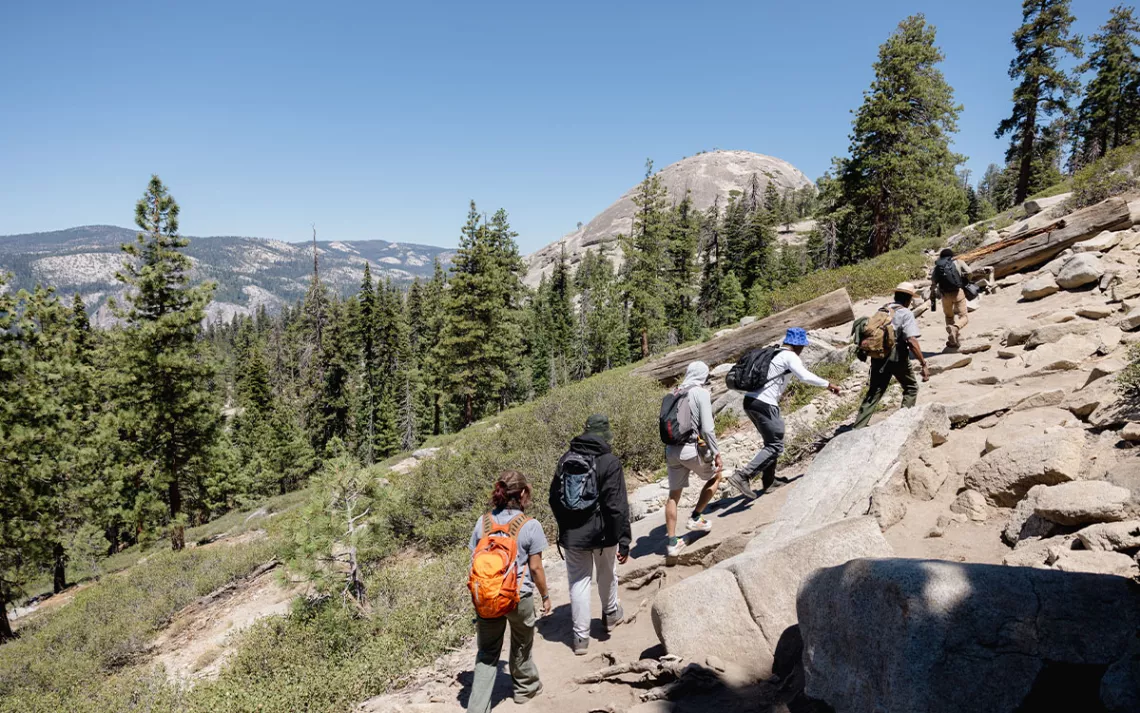Park-Challenged Indianapolis Locks Up Its Nature Preserves
In a city ranking dead last for parks, residents risk arrest to visit one

Photo by Robert Annis
After a quick peek to make sure the coast is clear, I walk past the large No Trespassing sign and slip around the locked gate blocking my way into the woods. I only want to see the last wild area inside Indianapolis, but technically my short hike into Chinquapin Ridge Nature Preserve is illegal.
It quickly becomes obvious that “wild” is a relative term here, since this 115-acre parcel along the edges of Fort Harrison State Park is far from pristine. Large concrete wellheads dot the landscape, and heavy equipment and abandoned tin-and-brick sheds sit just off the unpaved road. But it’s what lives inside Chinquapin Ridge that warrants protection. Farther into the preserve, for example, just off the edge of Indian Creek Lake, sits a great blue heron rookery. Elsewhere in the woods, a colony of endangered Indiana bats may be nesting.
On the other side of Fort Harrison, the somewhat more pristine Bluffs of Fall Creek Nature Preserve protects two state-endangered species of mussel in its creeks and streams, while hooded warblers and several other federally protected migratory birds nest in the acres of ash, oak, and white cedar trees climbing up deep valley walls.
Both parcels, however, were declared off-limits to humans by the Indiana Department of Natural Resources in 2011, despite the many area residents who want to expand the city’s greenway system through them.
The unlikely champion of that effort is Mike Hufhand, who, together with one Jedd Kidwell, was arrested in 2018 for allegedly building an illegal mountain-bike trail through Chinquapin Ridge (and using an herbicide to kill weeds around it), causing tens of thousands of dollars of damage. The pair were banned from state parks for a year and charged with felony criminal mischief and misdemeanor criminal trespass. If convicted, they could serve up to 28 months behind bars.
Hufhand is now working on an effort to retroactively legalize his bandit bike trail and to build a dozen miles of new, natural-surface trails in both off-limits nature preserves and elsewhere in Fort Harrison State Park. He’s joined forces with another local group that has long advocated for a paved trail connecting the city’s northeastern neighborhood of Geist to Fort Harrison and Indianapolis’s robust greenway system, which would allow recreating families, bike commuters, and others to avoid the area’s narrow, heavily trafficked roads.
State DNR spokesperson Marty Benson says that his agency tries to balance access with conservation, but that might not be possible in this case.
“Endangered species are protected by state and federal law,” Benson says. “It’s rare for a species that has been eliminated from an area to ever re-establish a viable, breeding population at that site. If it does happen, it’s typically through costly reintroductions and management, which don’t always work. It’s much more practical and effective to protect those species from leaving or dying out in the first place.”
How much of an impact would trails have? It depends on whom you ask. Purdue University used simulated models that predicted an increased human presence could negatively impact several of the threatened species of birds. Local bird expert Don Gorney claims human activity could interrupt the herons’ breeding cycle, as the birds would be constantly flying away from danger and spending less time incubating their eggs or feeding their young.
“Human recreational activity in parks can definitely have a detrimental impact on species, particularly larger animals,” says Emily Zefferman, an ecologist with California’s Monterey County. “There’s the issue of people leaving trash, trampling habitats, and bringing in invasive species. Human presence alone, including our scent and voices, can cause many animals to avoid areas.”
Other experts, however, believe the animals would quickly become acclimated to the new visitors.
“Most wildlife have a decent capacity to habituate to consistent nonthreatening trail use when visitors stay on the trails,” says Jeff Marion, a professor of forest resources and environmental conservation at Virginia Tech. “Heron rookeries can coexist nicely with recreational trails when the trail allows viewing from a distance.”
Marion adds that promoting visitation in wilderness areas “leads to closer connections to nature that encourage both preservation and improved physical and mental health.” When it comes to health, Indianapolis needs all the help it can get. Indy routinely ranks near the bottom of every national health and activity ranking; it might be called the Circle City because its residents are so round.
Part of the problem could be the lack of access to nearby parks and trails. Of the 40 most populous US cities, Indianapolis ranks in the bottom five for access to public parks, according to the American Society of Landscape Architects. Only 5 percent of its land is devoted to parks and trails, half the percentage of median cities, according to the Trust for Public Land. In its 2017 park rankings, that nonprofit ranked Indianapolis in a tie for dead last. (It only escaped a potential second consecutive year at the bottom in 2018 when Indy Parks failed to send needed data to the organization, earning the city an incomplete score.)
“Having access to trails that you don’t have to drive to leads to both better quality of life and health outcomes,” says Charlie McCabe, director of the Trust for Public Land’s Center for City Park Excellence.
“Our infrastructure problems [go hand-in-hand with] our high rates of cardiovascular disease, diabetes, and other ailments,” says pulmonary-care physician Franklin Roesner. “Promoting healthy neighborhoods with easy access to parks and trails and could be huge in our fight against depression and other diseases. We’re lucky to have such a beautiful natural area in the middle of such a densely populated area. Solutions can be found, if we’re all willing to compromise.”
Other areas across the country have faced similar issues. In Austin, Texas, for instance, human traffic is prohibited on certain Zilker Park trails during the nesting season of the endangered golden-cheeked warbler, says Richard Heilbrun of Texas Parks and Wildlife. Bikers and hikers work together with birders and the city parks department to stop unauthorized trail use during that time, which allows them to maintain their access at other times of the year.
The DNR’s Benson says that the agency would be willing to entertain proposals for trails, assuming the “changes won’t negatively impact the natural features and reasons the preserve was set aside.” Ironically, one of the biggest impediments may be the bandit trail allegedly built by Hufhand; local trail advocates fear the DNR may dig in its heels on the issue, lest others take inspiration from the outlaw tactic.
 The Magazine of The Sierra Club
The Magazine of The Sierra Club



